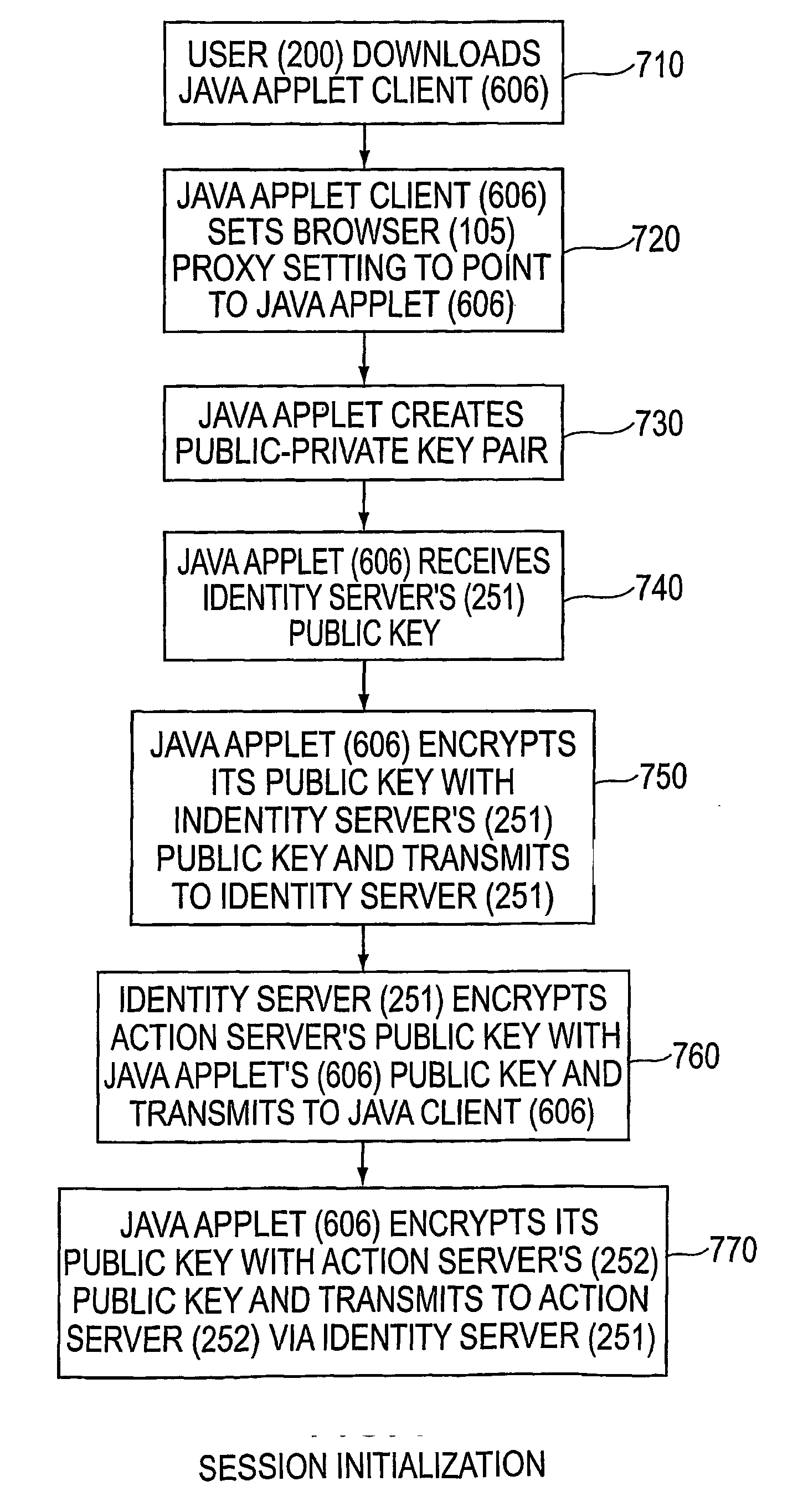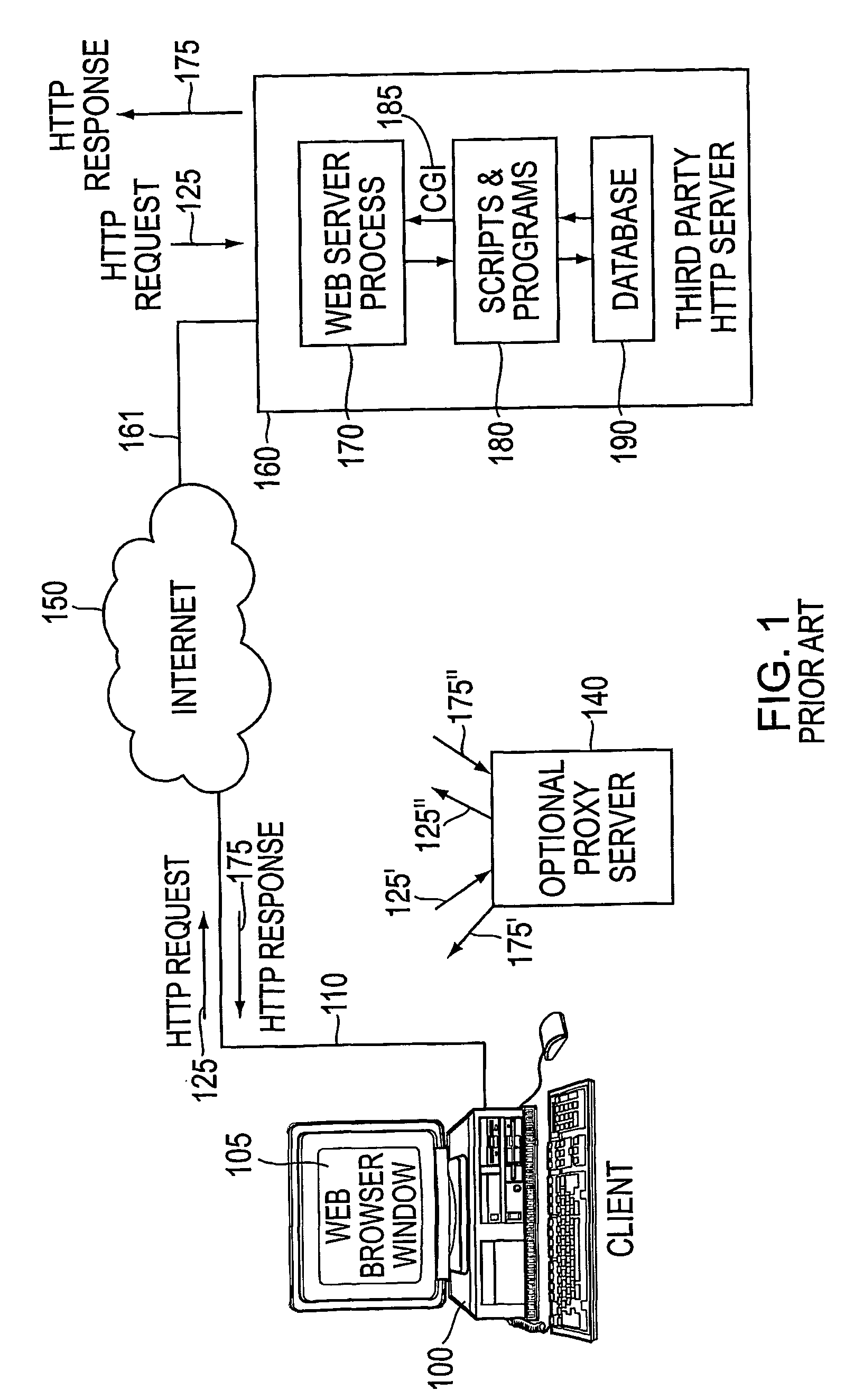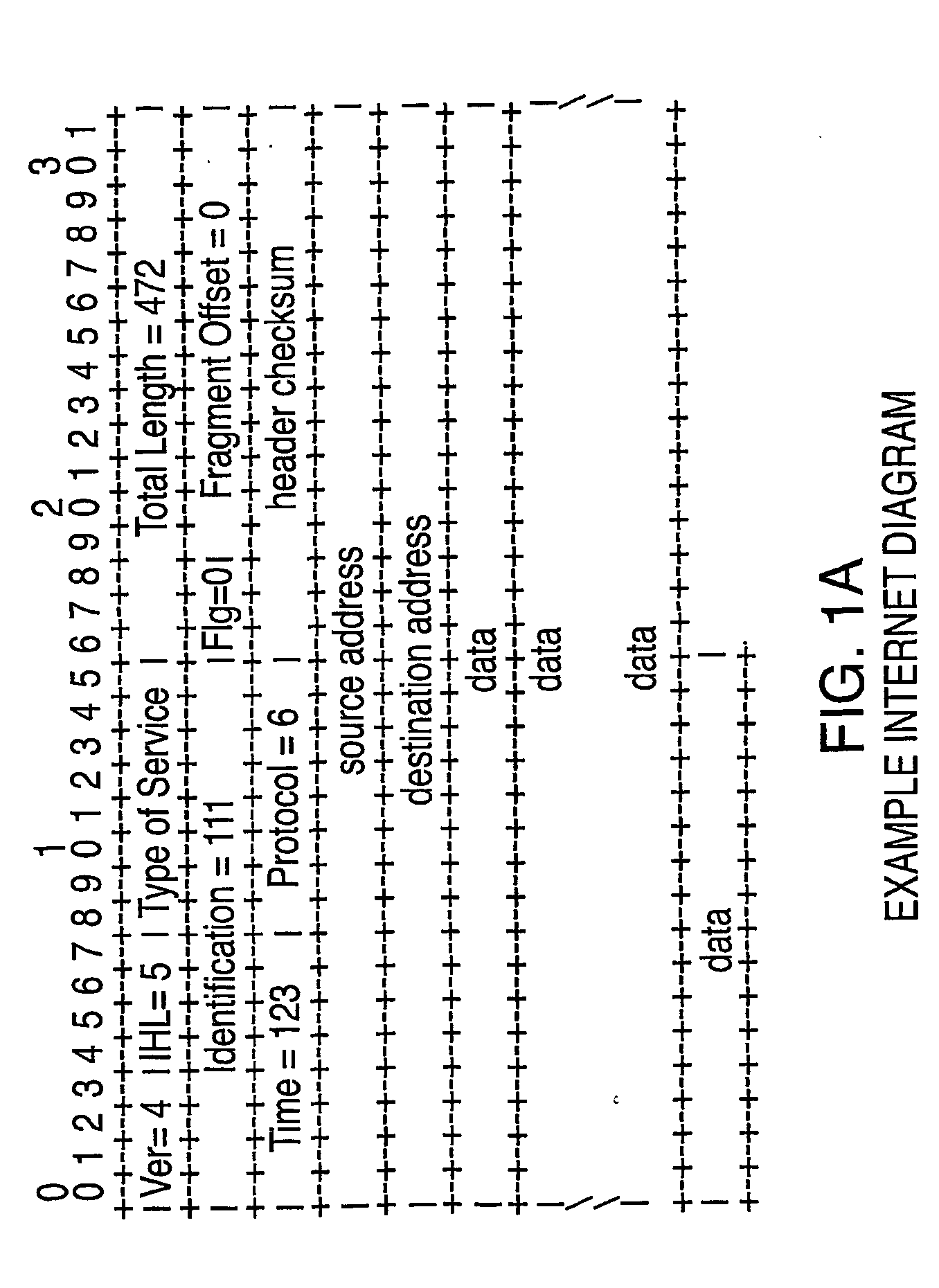System for providing session-based network privacy, private, persistent storage, and discretionary access control for sharing private data
a technology of private and private data, applied in the field of communication, can solve the problems of proxy server access control, inability to ensure the privacy or anonymity of end users, and continuous exposure of individuals using telecommunications networks to privacy compromises,
- Summary
- Abstract
- Description
- Claims
- Application Information
AI Technical Summary
Benefits of technology
Problems solved by technology
Method used
Image
Examples
Embodiment Construction
[0153] Further embodiments of the invention are discussed in connection with the component block level diagram shown in FIG. 11, and the UML diagrams of system objects shown in FIGS. 12-16.
[0154] Overview of System Implementation
[0155] Two primary types of data exist encrypted in the database: persistent objects and access control data. Persistent objects include binary data, collections and users. Access control data is used to validate that a given user's request is allowed under the permissions set up by the object's owner. Cryptography protects both the persistent objects and their associated access control entries such that the system never has sufficient information to decrypt both, or to associate a given access control entry with an object persistently.
[0156] Summary of Private Persistent Storage Capabilities
[0157] The private persistent storage capabilities provided by one embodiment of the invention involve the following (with reference to FIG. 11):
[0158] A client applicat...
PUM
 Login to View More
Login to View More Abstract
Description
Claims
Application Information
 Login to View More
Login to View More - R&D
- Intellectual Property
- Life Sciences
- Materials
- Tech Scout
- Unparalleled Data Quality
- Higher Quality Content
- 60% Fewer Hallucinations
Browse by: Latest US Patents, China's latest patents, Technical Efficacy Thesaurus, Application Domain, Technology Topic, Popular Technical Reports.
© 2025 PatSnap. All rights reserved.Legal|Privacy policy|Modern Slavery Act Transparency Statement|Sitemap|About US| Contact US: help@patsnap.com



